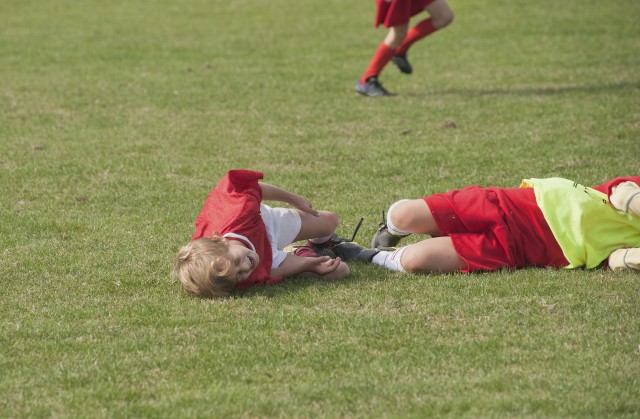Researchers at the Medical College of Wisconsin sought to bridge that data gap in a randomized trial of young concussion patients published in the journal Pediatrics on Monday.
The study followed 88 children between the ages of 11 and 22 for 10 days after they were discharged from the emergency room with prescriptions for either “strict” or “usual” rest. Those in the strict rest group were told to avoid school, work and physical activity for five days, followed by a gradual return to activity. The usual care group received whatever instructions their doctors deemed appropriate. Based on a survey of doctors at the hospital, the authors assumed this "usual" care was one to two days’ rest with a gradual return to activity once symptoms disappeared.
The majority of children in both groups improved within the study period, in keeping with evidence that most concussions resolve within a week to 10 days. But to the authors’ surprise, strict rest seemed to provide no additional benefit and even had some unintended consequences. Children on strict rest complained of more symptoms, primarily headaches, than those given so-called usual care.
Children confined for five days also reported more emotional symptoms, such as irritability, nervousness and sadness, says Danny Thomas, an assistant professor of pediatrics at the Medical College of Wisconsin who led the study. Thomas thinks the extra time at home might have given kids a chance to fixate on their symptoms.
“It’s like having a cavity that bothers you most at nighttime when you’re trying to sleep and have no distractions,” he says.
There’s no question that some rest is critical, and preventing kids from getting injured again is even more important for recovery, Thomas says. “But locking kids in their room and taking away their iPad is probably not going to make them better faster.”
Still, the study is small and, for some researchers, raises additional questions.
Robert Cantu, director of Sports Medicine at Emerson Hospital in Concord, Massachusetts, isn’t convinced that the study shows that strict rest offers no additional benefit. One problem, Cantu says, is that “usual care” could be very similar to strict rest.
When symptoms clear, doctors typically send a child back to school, Cantu says. But if a child still has significant symptoms after a few days’ rest, it’s typical to call for more rest. “You’d need to see more details about how activity differed in these two groups to say there truly wasn’t a difference,” Cantu says. And because about 80 percent of cases get better on their own, he says, you’d need much higher numbers to detect a statistical difference between the two strategies.
Though larger study groups are always better, a bigger concern is the age difference among the participants, says David Hovda, director of the Brain Injury Research Center at the University of California, Los Angeles.
“The human brain doesn’t reach maturity in terms of chemistry and metabolism until well after 20 years of age,” Hovda says. Since all of the children were in different phases of brain development, it’s hard to compare even those children who were in the same rest groups. He’d like to see a follow-up study in a smaller age group, say, high school football players or 16- and 17-year-olds.
Still, Hovda is intrigued by the main finding that forcing children to rest beyond a few days appears to offer no benefit. It’s likely that restricting all activity stresses them out so much that it complicates recovery, he says. Whatever the explanation, he would like to see much more research in this area.
In a commentary that accompanies the study, William Meehan and Richard Bachur, doctors at Boston Children’s Hospital, said that optimal rest periods will likely vary based on multiple factors, including the child’s age and gender as well as the severity of symptoms. Based on existing evidence, they conclude, a recommendation of reasonable rest for the first few days after a concussion, followed by a gradual resumption of cognitive activities and exercise – provided it carries no risk of additional head trauma -- seems prudent.
There may be no absolute rule for when to let your child resume regular activities following a concussion, but no one disputes that returning to play in the same game risks a far more severe brain injury. My nephew didn’t like sitting out the rest of a competitive game. But he and his coaches made a good call. This year, he played every game – including the last game of the fall season, when his team finished first in their division.
